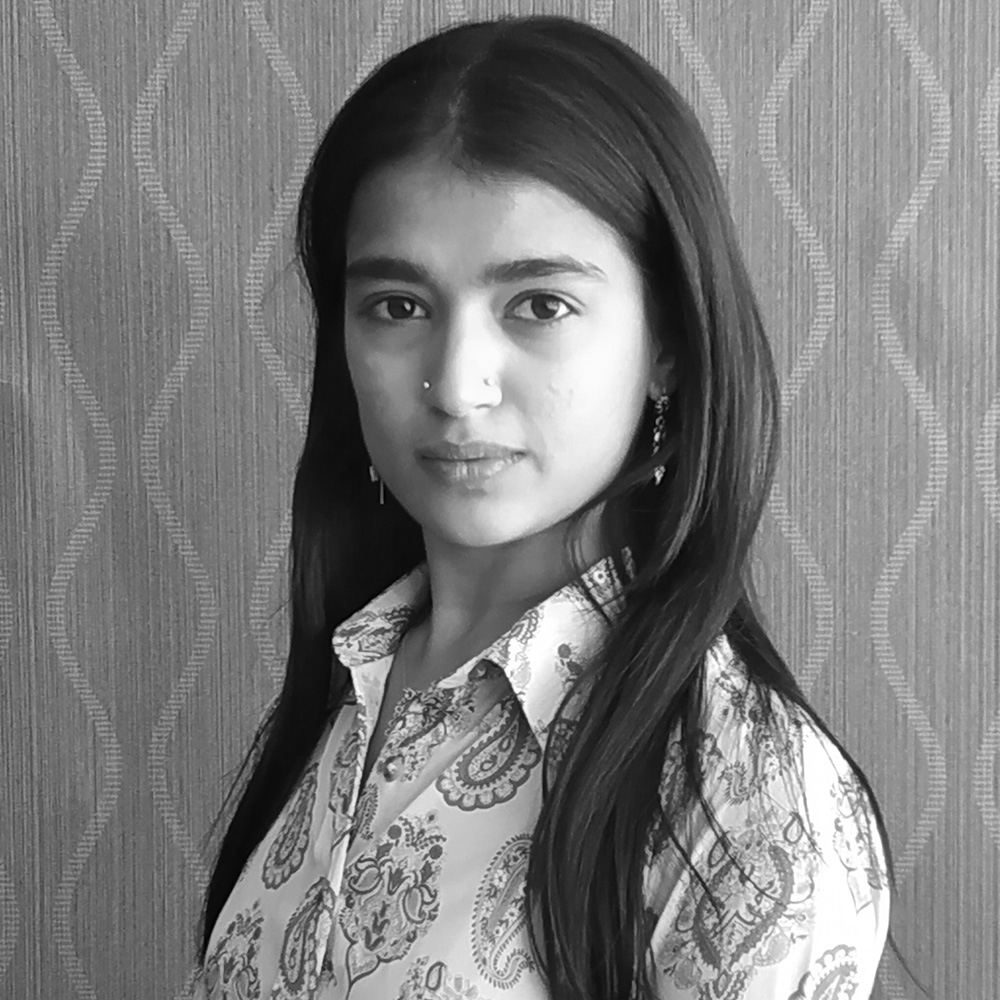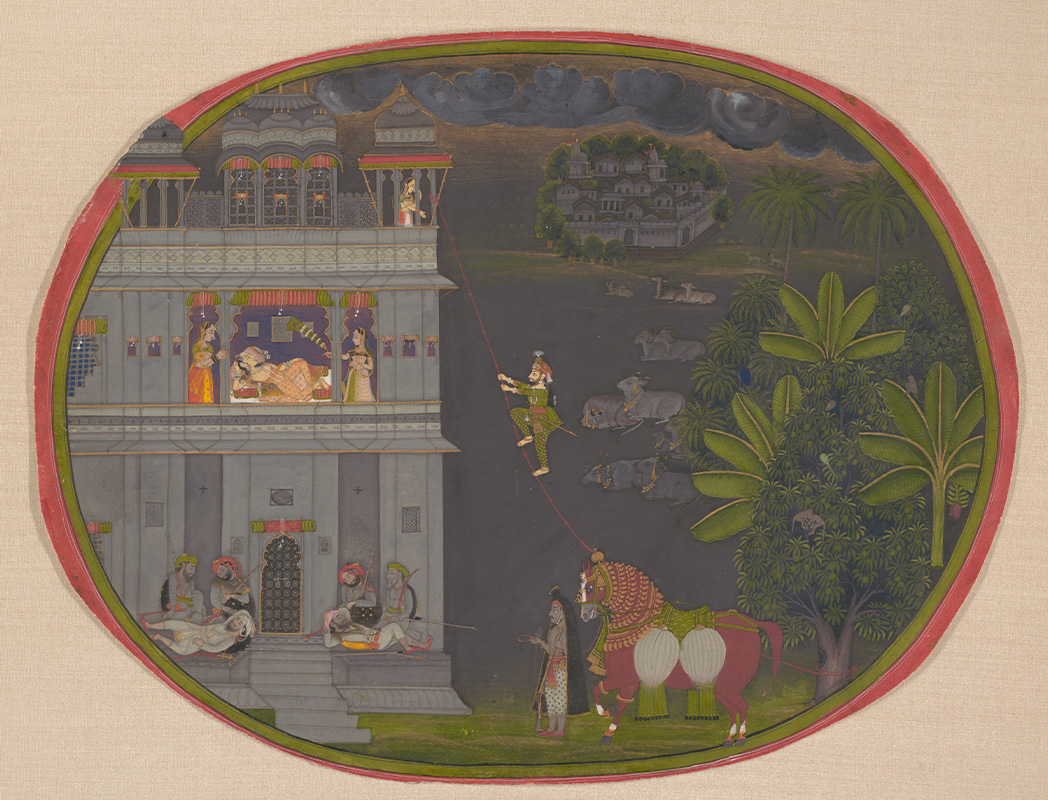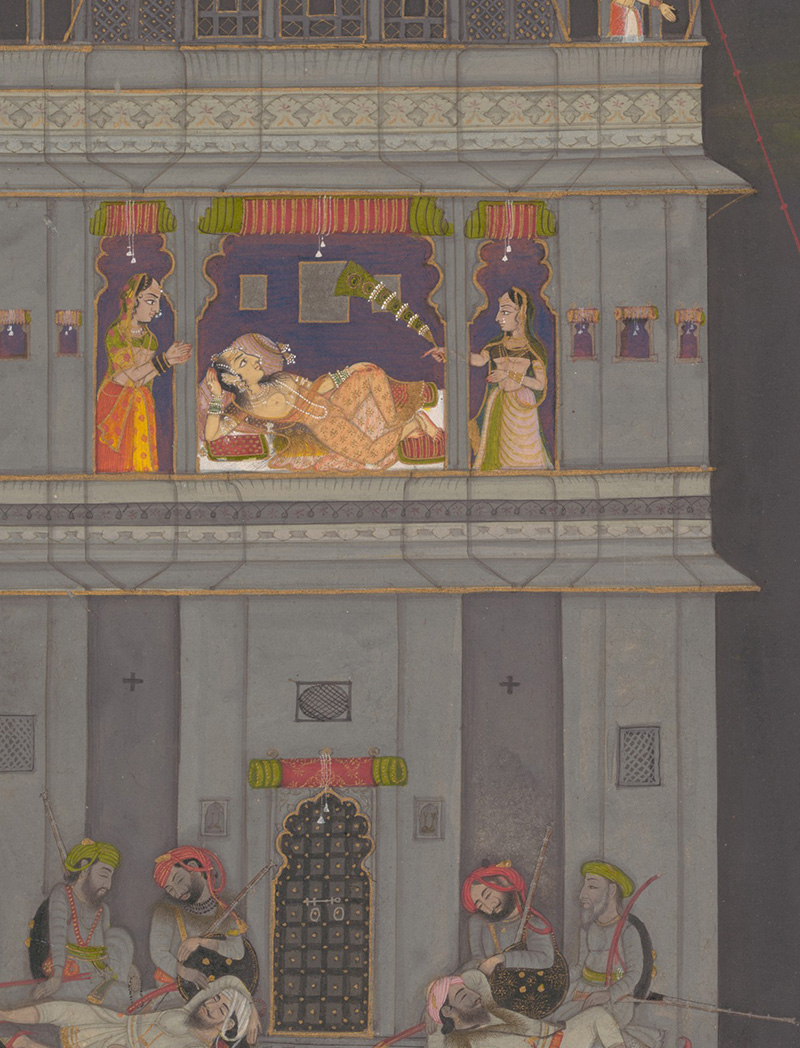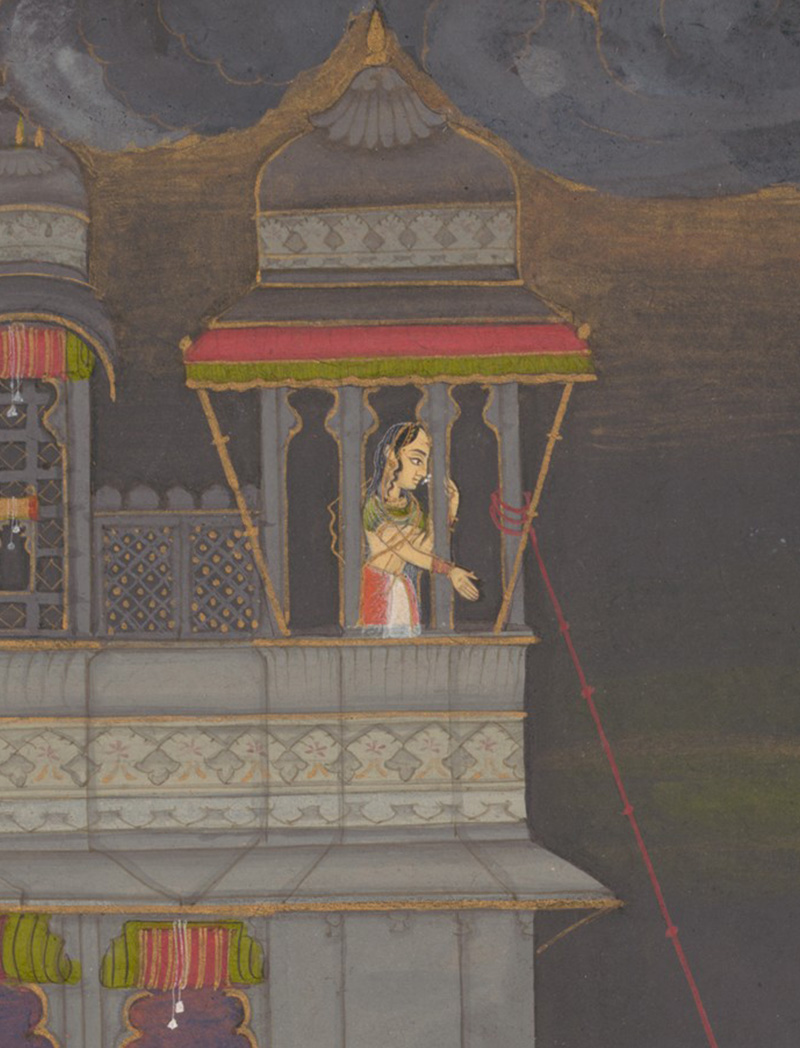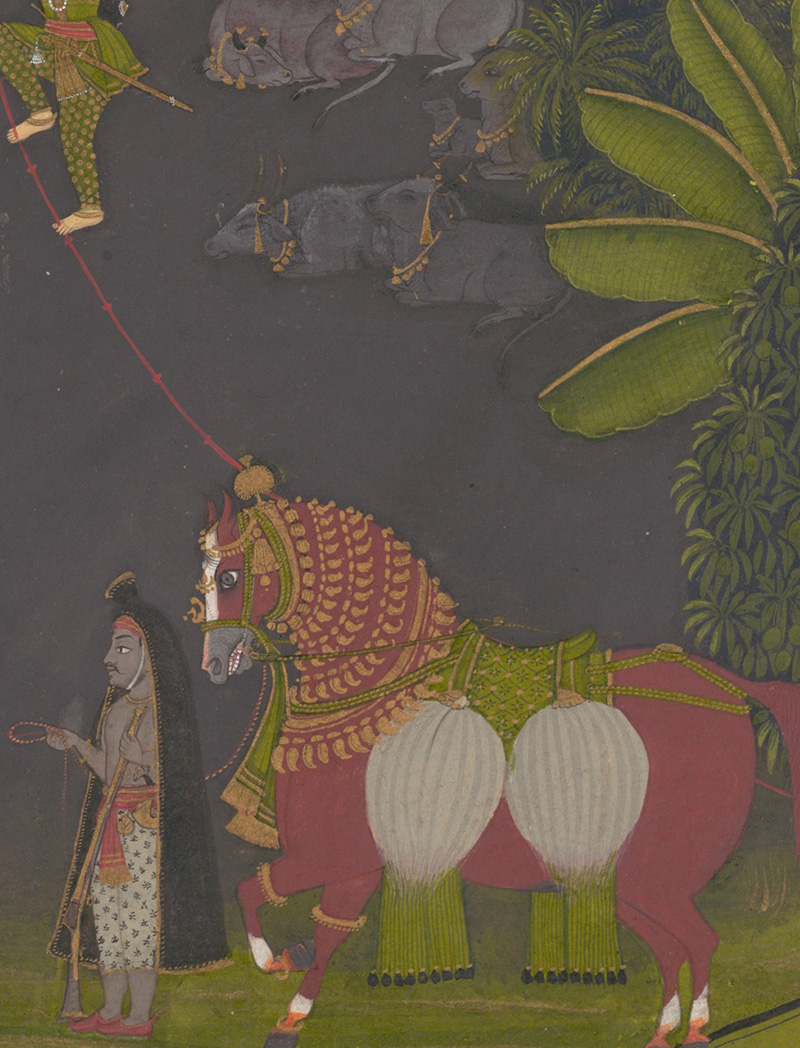STORIES
A Clandestine Meeting of Lovers: Chokha’s “Escapade at Night”
Attributed to Chokha, a prominent painter active in the late eighteenth and early nineteenth centuries, “Escapade at Night” was created sometime between 1800–10. The subject here — a late-night tryst between lovers — was commonly depicted in miniature paintings from the seventeenth, eighteenth and nineteenth centuries, inspired by the poetry traditions of the time, where love and longing were recurring themes.
The painting depicts a twilight hour with storm clouds gathering in the grey sky, as a nobleman dressed in silks and pearls carefully ascends a rope, his bare feet gripping the knots on the rope. We know this is a clandestine moment as the guards of the mansion are asleep by the locked door with their swords and shields in their hands. They are unaware that a gentleman has begun his ascent towards the lady of the house, who is waiting inside, visible through the lit window. She is dressed in diaphanous, translucent garments, adorned and jewelled and attended to by two companions. Among the lush green garden trees, all is still. Peacocks and parrots have returned to their nests, and the monkeys are quiet, resting against each other. From a distance, cows, goats, deer and rabbits watch the lovers’ meeting play out. The nobleman’s horse, splendidly bedecked, anchors the rope, held steady at the reins by an attendant. Up at the jharokha (balcony), the lady’s companion has tied the other end of the rope to a post and looks on as the man climbs undetected.
Chokha, much like his father, the artist Bagta, was trained in the large painting ateliers of Udaipur, also known as Mewar, patronised by Maharana Bhim Singh. Rajput kings were patrons of art, especially miniature painting ateliers, where styles specific to each region were developed. Not long after the completion of this painting, Chokha, like his own father, went on to settle in Devgarh in 1811, where he became the principal court painter under Rawat Gokul Das II. There, he was able to develop his own individual approach, breaking away from the particular style and interpretation of subjects of the Mewar school. In time, Chokha’s own son, Baijnath, would go on to succeed him as the court painter at Devgarh.



